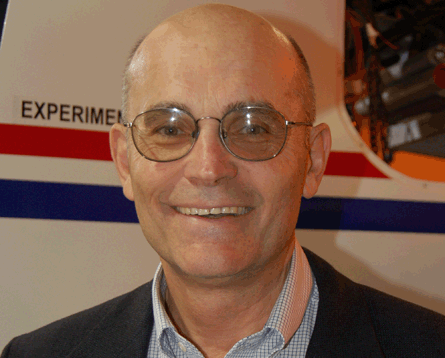Jay Carter began building model aircraft at a young age, entered the wind turbine business and broke into the rotorcraft industry with Bell Helicopter before going solo as president of Carter Aviation Technologies.
What is your aviation history?
My first company was in the wind turbine business. I began it in 1976 and sold it in 1992. My first aviation job was working for Bell Helicopter. I was a research and development design engineer, helping with the design of the rotor for the XV-15 tiltrotor. I worked there for over two years, getting a feel for R&D engineering. That was the only job I had in aviation before I went out on my own.
 |
|---|
© Carter Aviation TechnologiesCarter: happiest when developing totally different technology |
Why venture out on your own?
My father had his own business, so I grew up in that environment. He had a machine shop, where I was allowed to tinker and build things. At a young age, I worked on the mill and lathe and learned how to weld. I built a canoe, a go-kart and a few model airplanes.
I built my first two aircraft with my father's help when I was in college - both autogyros. The first was a basic tube construction powered by a 35hp (26kW) outboard motor. It was so underpowered, it was unsafe to fly manned, so we flew it like a huge u-controlled model aircraft with 60m (200ft) cables. My father was using composites in his business in the 1960s, so I was introduced to composites then. We designed our rotor with a twistable spar and that design was later integrated into our wind turbine blades and our current rotor blade.
Have your objectives changed?
When I started the aircraft project I was looking at designing and building an autogyro just for my family that had better performance than what was available. I began to realise certain changes could make huge improvements. At first I didn't trust my figures, so I took my data to one of my division bosses at Bell to have him check my figures. He also thought I had miscalculated something, but after considerable evaluation couldn't find a mistake. He became an adviser and one of the first stockholders in our company.
When we began designing our new aircraft, our goal was to make it the most highly capable and safest that we could design. It has taken us a while, but we believe we are meeting that goal.
What is the hardest thing about creating a speedy rotorcraft?
The hardest part was overcoming retreating blade stall and keeping the rotor stable at low RPM. There were nine problems we had to solve to be successful. Those solutions all had to do with rotor control and are the basis of most of our 24 patents.
What is a regular work day?
The work varies from day to day, but most of my time is spent on design engineering. I start my day a couple of hours before my staff, so that I can catch up with emails and management tasks. Three days a week I work out before coming to the office.
In any one day, I am supervising tasks from concepts to design, stress analysis, parts production, testing, and so on, and then just general management of the company as president. My days are usually 12-14h and at least six days most weeks.
What is your favourite part?
Solving problems - particularly in engineering. Sometimes there are several ways to solve a problem. We will usually investigate the most reasonable and pick a course that provides the most advantages. It's not always the easiest solution. I think it is much easier to keep your enthusiasm when you are developing technology that is totally different and not reworking older technology to update it.
Source: Flight International


























